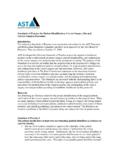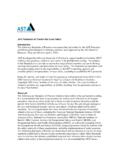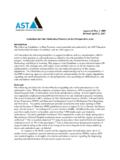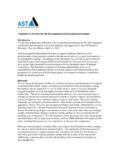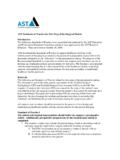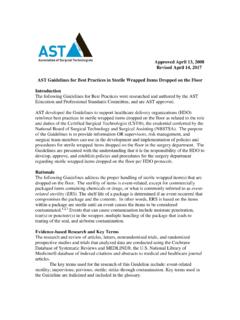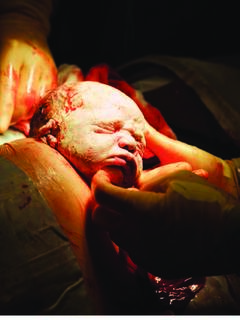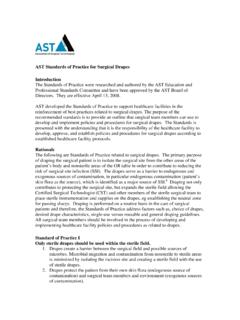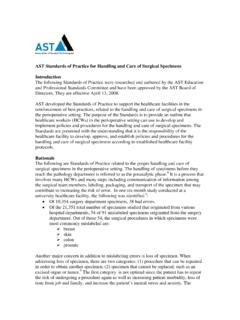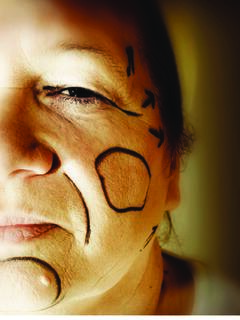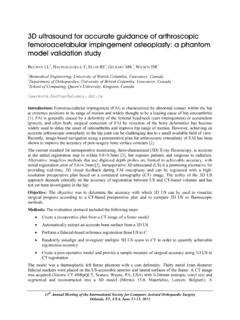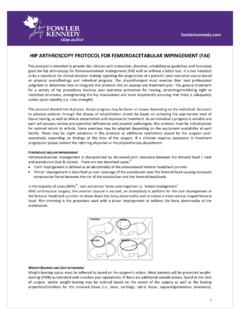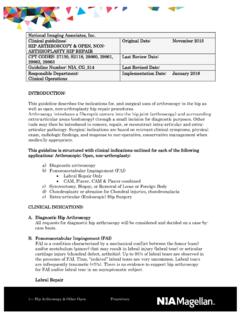Transcription of The Surgical Technologist - Association of Surgical ...
1 MAY 2010 | The Surgical Technologist |219 HISTORY Hip arthroscopy is a rapidly-evolving field in orthopedic Similar to arthroscopic knee and shoulder surgery, hip arthroscopy involves an arthroscope inserted into the hip joint space. Its history is brief. Minimally used in the late 1980s, due to limitations in the understanding of the joint pathology and techniques, hip arthroscopy has seen a surge in technical developments since the mid 1990s and has enabled surgeons to begin treating a variety of painful hip ,3 LEARNING OBJECTIVES Review the relevant anatomy for this procedure Examine the set-up and Surgical positioning for this procedure Compare and contrast the osteoplasty-cam procedure and the acetabuloplasty-pincer procedure.
2 Assess the indications for femoroacetabular impingement Evaluate the recovery and rehabili-tation process following FAI As the understanding of arthroscopic anatomy, indi-cations, potential complications and techniques has evolved, hip arthroscopy has become a successful treatment method for a variety of hip ,3 Arthroscopic hip surgery can address a variety of painful hip conditions, including labral tears, loose bodies, ligamentum teres femoris injuries, capsular laxity, chrondral deformities, coxa saltans (clicking hip), and femoroacetabular ,4,5,6 While it does not allow for a 360-degree view of the joint, like the more commonly-used open procedure, most pathological structures can be visualized and repaired using the arthroscop-ic approach.
3 This procedure is preferable for repair because, if performed correctly, it is less invasive, less traumatic, and has a shorter recovery time than open ,8 Patients of all ages and activity levels tend to prefer an arthroscopic operation because of this. Hip arthroscopy is especially popular with athletes because it may allow for a quicker return to competition. by Margaret M Armand, CSTwith contributions by Benjamin G Domb, MD and Rima Nasser, MDHip Arthroscopy:Treating femoroacetabular impingement | The Surgical Technologist | MAY 2010 220hamstrings: biceps femoris, semitendinosus and semimem-branosus, and the gluteus maximus. The piriformis, obtura-tor internus, obturator externus, the superior and inferior gemellus muscles and the quadratus femoris muscle function as lateral rotators of the hip.
4 The adductor muscles include the adductor longus, adductor brevis and the adductor mag-nus with the pectineus and gracilis is primarily provided by the femoral nerve anteriorly and the sciatic nerve The obturator nerve also passes through the hip. The femoral nerve inner-vates the flexor muscles of the thigh, the extensor muscles of the leg and the skin of the medial and anterior aspect of the thigh. The sciatic nerve supplies the posterior and lateral aspects of the thigh. The lateral cutaneous nerve affects the skin of the lateral, anterior and posterior aspects of the blood supply to the hip is from the femoral arteries that run anteromedial in the thigh. The femoral artery has a deep branch called the profunda femoris, which supplies blood to the hip joint Within the ligamentum teres is a smaller vessel that supplies blood to the femoral head.
5 The blood return is through the great saphenous and femoral impingement (FAI)Many times, it is abnormal anatomy that causes impingement . In cases where there is a wide lip of bone on the socket, or over-coverage in one area, this bone pinches against the labrum and the femoral head-neck junction. An extra bony growth on the femoral neck causes a deviation from the normal sphericity of the femoral head. This also leads to increased pinching and damage to the labrum and acetabular rim femoroacetabular impingement (FAI) is a painful hip condition where the labrum of the acetabulum becomes impinged between an abnormally-shaped femoral head-neck junction and/or a deep or overhanging rim of the acetabulum during flex-ion, adduction and internal ,9 The pain may be caused by the repetitive tearing or crushing of the labrum, or through bone-on-bone contact of the femoral head-neck junction and the There are two types of FAIs.
6 Cam impingement from the femur and pincer impingement from the ,8,9,10 While these may occur inde-pendent of each other, it has been shown that combined impingement occurs in 86 percent of the OF THE HIPThe hip is a ball and socket joint. The arrangement of bones, ligaments and muscles allow for a variety of movements and a large range of motion. The hip joint consists of the bones of the pelvis and the femur, ligaments and tendons, muscles, nerves and blood vessels. Three fused bones; the ischium, ilium, and pubis provide the frame of the pelvis. The head of the femur fits into the acetabulum formed where the three parts of the hip bone converge. The bony surfaces are lined with articular cartilage which allows for smooth movement of the bones in the joint.
7 Covering the rim of the acetabulum is a fibro-cartilagi-nous structure called the labrum. The labrum helps to create a suction seal for the joint surfaces. This labrum has sev-eral purposes, including aiding joint stability and helping to control the ingress and egress of synovial fluid. If the socket or acetabular contour is too deep, or the head/neck junction of the femoral head is irregular, this excessive bone growth can cause impingement of the Three large ligaments support the hip capsule and keep the hip in place. Anteriorly,the iliofemoral ligament is attached at the iliac spine of the hip bone to the inter-trochanteric line of the femur, the pubofemoral ligament is attached at the pubic part of the acetabular rim to the neck of the femur, and posteriorly, the ischiofemoral ligament is attached at the ischial wall of the acetabulum to the neck of the femur.
8 These ligaments form the hip joint capsule, which is filled with synovial fluid that lubricates the articu-lating bones of the joint and allows the hip to move freely. A smaller ligament, the ligamentum teres, attaches from the fossa of the acetabulum to the head of the muscles cross the hip that control move-ment and help propel the human The majority of these muscles originate on the pelvic girdle and insert along the femur. Major flexors include the four muscles of the quadriceps muscle: the rectus femoris, vastus lateralis, vastus medialsis, and vastus intermedius along with the sartorious muscle. Extensors include the three muscles that form the Tweentyy-sseeveen muusscleess croossss thee hipp thaat coontrool mooveemeent aandd help propel the human The majority of these muscles oriigiinate on thhe pellviic giirddlle andd iinsert allong thhe ffemur.
9 MAY 2010 | The Surgical Technologist |221 DIAGNOSISP reoperative planning is important for identifying patients who will benefit from arthroscopic hip surgery. While some patients with hip pain respond to more conservative treatments, such as therapy, rest and non-steroidal anti-inflammatory drugs (NSAIDs), some have pain that can only be treated by ,6 In patients with persistent symptoms, a carefully-elicited history and physical examination may suggest various anatomical and pathological A challenging goal of the physical examination is to determine if the pain is of intra-articular or extra-articular ,2 In order to discover this, [t]he history should include the qualitative nature of the discomfort (clicking, catching, stiffness, instability, decreased performance, and weakness)
10 , the location of the discomfort, onset of symptoms, and any history of trauma or developmental abnormality. 4 Extra-articular causes of hip pain, including sacroili-ac joint pathology, stress fractures, trochanteric bursitis, An extra bump on the femoral head can cause a deviation from the normal sphericity of the femoral head, leading to increased friction and damage of the acetabular rim cartilage. The condition that results has been termed femoroacetabular impingement (FAI).occult hernias and tendon injuries (iliopsoas, piriformis, rectus hamstring or adductor) occur more frequently than intra-articular causes of hip ,11 Lateral thigh pain is typically due to trochanteric bursitis, and posterior but-tock and sacroiliac pain is usually due to spinal or sacro-iliac ,6 Since most hip joint pathology is found within the intra-articular region, distraction is necessary to achieve arthroscopic Determining the signs and symptoms that suggest intra-articular pathology are essential in dif-ferentiating patients who may benefit from hip The presence of groin pain and /or anterior thigh pain extending to the knee is a significant indicator, especially if the pain is activity ,8,9,10 In the case of FAI, present-ing pain is commonly felt when the hip is flexed.
